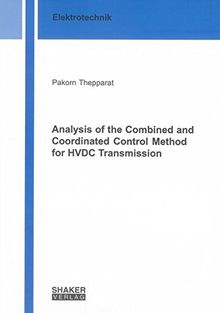
High Voltage Direct Current (HVDC) is a state-of-the-art technology for bulk power transmission from rectifier stations to inverter stations where the AC systems are often weak. The weak AC systems are very sensitive to the disturbances and the variations of active and reactive powers; the HVDC controls having a transient response time of only a few milliseconds with the accuracy of a fraction of an electrical degree for firing the converter valves can therefore play a significant role in stabilizing the systems. Since the conventional HVDC control has been used more than 50 years, the further enhancements in HVDC control technology are become challenge.
In this thesis, the difficulties of conventional control are demonstrated and the novel HVDC control is introduced. The concept of the novel control promises to improve the system stability, particularly in weak systems. Moreover, the analysis of control movements explains the background of the inherent oscillations. Studies on the CIGRE Benchmark HVDC model and the practical back-to-back HVDC model are therefore performed to prove the use of novel control in comparison with the conventional one.
The linear continuous model of CIGRE Benchmark HVDC is developed for eigenvalue analysis. The validation of the model according to time and frequency response shows the satisfactory fidelity. The model allows for analyzing in different control modes at the rectifier and the inverter. In addition, the physical relationships of the subsystem interconnection variables are directly considered in the model, the influences of system strength at the rectifier and the inverter to the stability can therefore be revealed. With the CIGRE Benchmark HVDC model, also a number of time domain studies are performed to demonstrate the results of the novel control compared to the conventional one.